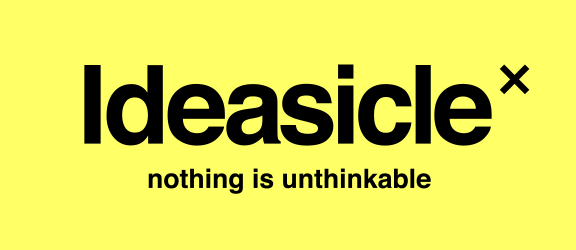Ideasicle X, The First Analog SaaS Platform?
Photo by Immo Wegmann on Unsplash
I was listening to Mitch Joel’s podcast, “Six Pixels Of Separation,” this morning (it’s great, check it out). He was interviewing George Dyson, the writer of the book Analogia – The Entangled Destinies of Nature, Human Beings and Machines. During the interview Dyson and Joel talk about the differences between “digital” and “analog” and somewhere in the middle of that it hit me. Ideasicle X is a digital platform, no doubt about that. But the value in it comes from purely analog processes. Let me explain.
The difference is continuous
Let’s start by defining the two terms explicitly. “Digital” describes an electrical signal that is not continuous. “Analog” describes an electrical signal that is continuous. The easiest way for me to understand the difference is comparing a digital photo with a photo taken using film. The digital photo, while it seems like a cohesive, singular image, is actually made up of thousands of pixels each contributing separately to the whole of the picture. Whereas an image made from film is a continuous flow of “image” from one millimeter to the next.
But isn’t a Saas (Software as a Service) platform digital by definition? In our case, yes and no.
The real software is human
Ideasicle X uses digital signals in order to facilitate human, creative, analog idea generation. No matter how you slice up the pixels, none of them matter without the four human beings posting their ideas, seeing other teammates’ ideas, and then being inspired to build and riff on those ideas.
The real “software” within Ideasicle X is very much human.
What the “digital” part of Ideasicle X does is provide a new dimension (seriously, it’s like another dimension) where individuals on the team of four can reside physically in different parts of the world, can come at a problem from different perspectives, and can continue to interact with their own lives while the creative problem incubates in their minds, but the digitalness of the platform allows the four to behave like a singular, unified analog “brain.”
If one freelancer has an idea—an idea derived from analog living—they use the digitalness of Ideasicle X to post it using digital assets (type, digital images, videos, etc.). The digitalness then pings the other three teammates (and the agency customer) that an idea was posted. The digitalness then further allows the teammates to consume the idea quickly and post their own thoughts in reaction, their own builds, their own riffs. But that’s where the digitalness leaves off and the power of continuous analogness begins.
Once an idea derived from analog-living is posted, there is then an analog, human reaction to it. Yes, the digitalness of the platform facilitates its consumption, but it does nothing more. There is no inherent value is the digitalness other than what happens to the human, analog participants. Inspiration is not digital. An idea, per se, is not digital. Creativity itself is not digital.
The magic is the continuous analog signal
It’s the continuous flow of the “signal” that is the true magic of Ideasicle X. The evolution of a thought posted by freelancer 1—perhaps not even an idea yet—to it becoming an idea with freelancer 2 to the same idea made better by freelancer 3 to completely new ideas inspired by the previous activity by freelancers 1, 2, 3, and 4. Very human, very continuous, very not digital.
But without the digitalness, the power of our form of analogness would not be possible.
Thanks, Mitch, for the inspiration. I’d never thought of Ideasicle X in this way.
Will Burns is founder and CEO of Ideasicle X. Follow him on Twitter @WillOBurns.



